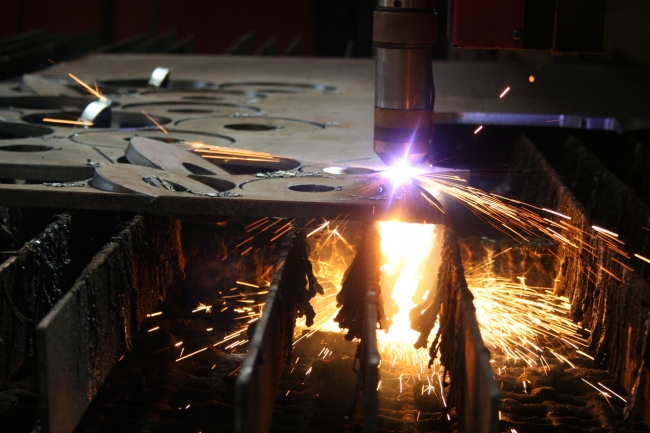3 minute read
Export orders grow strongly as domestic orders hold steady
Manufacturing growth slowed over the three months to April, but remained well above average, according to the latest quarterly CBI Industrial Trends Survey.
The survey of 356 manufacturers revealed that optimism about general business conditions deteriorated marginally, while domestic orders were largely unchanged on the quarter. Output growth slowed somewhat, but remained well above the long-run average.
In contrast, optimism regarding export prospects for the year ahead continued to improve at an above-average pace, while export orders growth accelerated at the fastest pace in more than 20 years. Meanwhile, inventories of raw materials rose at the fastest pace since 1977.

Export orders growth has accelerated at the fastest pace in more than 20 years / Picture: Getty/iStock
Employment grew at a similar pace to the last three months – above the long run average – with further growth expected next quarter. While skilled labour diminished as a likely constraint on output in the quarter ahead, concerns that labour availability would constrain investment picked up again. Manufacturers expect to spend more on training and retraining over the next twelve months.
Capacity pressures eased compared with the previous quarter, when the proportion of firms with spare operating capacity was the lowest in 29 years. Firms intend to spend more on product and process innovation over the next year, while the balance of firms expecting to spend more on buildings rose to the highest in two years and well ahead of the long-run average. Efficiency remains the predominant driver of investment, closely followed by replacement of existing capital (eg machinery).
Average unit cost growth edged lower, and domestic price growth also slowed slightly, while expectations for price growth returned to around the long-run average from last quarter’s 44 year high.
Rain Newton-Smith, CBI Chief Economist, said: “Although manufacturing growth has slowed again this month, manufacturers continue to enjoy the fruits of stronger growth in Europe and the lower pound. For manufacturing to continue its resurgence in the years ahead, it will be critical for trade to remain as frictionless as possible with the EU – our closest and biggest trading partner.
“And, as the UK leaves the EU, it’s vital firms continue to pursue productivity gains, for example by sharing ideas on innovation, to improve their competitiveness overseas.”

Although manufacturing growth slowed over the three months to April, it remained well above average, according to the latest quarterly CBI Industrial Trends Survey / Picture: Getty/iStock
Tom Crotty, Group Director of Ineos and Chair of CBI Manufacturing Council, said: “While we are seeing a slight softening in the domestic market, UK manufacturers continue to reap the gains from strong global demand. This is a good sign that our businesses are competitive on the world stage.
“But with concerns over labour shortages high, preserving this competitive edge will depend on manufacturers having ongoing access to the people and skills that they need from abroad. Businesses are ready to work with government to ensure an immigration system that is both consistent with the referendum result and supports economic growth.”
The latest CBI Industrial Trends Survey
Key findings: Q1
• 20% of firms said they were more optimistic about the general business situation than three months ago and 24% were less optimistic, giving a balance of -4% (down from +13% in the three months to January). Optimism about export prospects for the year ahead remained unchanged (+15%) compared with the previous quarter (+15%).
• 30% of firms said the volume of output over the past three months was up and 17% said it was down, giving a balance of 13%, above the long-run average (+2%), and marking lower growth than in the preceding quarter (+21%).
• 32% of businesses reported an increase in new orders, and 18% a decrease, giving a balance of +14%. Domestic orders were broadly unchanged (+1%) compared with the previous quarter, the lowest growth since April 2016. Export orders (+27%) grew marginally more quickly than in the previous quarter (+24%) and at the fastest pace since April 1995.
• 34% of manufacturers said employee numbers were up, and 13% said they were down, giving a rounded balance of +21%, broadly similar to the previous quarter (+20%).
• Average unit cost growth (+24%) slowed slightly on the previous quarter (+29%), but remained well above the long run average (+11%). Growth in average domestic prices slowed to +14% (from +21%), but likewise remained well above the long run average (-1%).
Key findings: looking ahead
• New orders growth for the next three months is expected to slow (+7%), with domestic orders expected to again be largely unchanged (-1%). Meanwhile, expectations are for softer growth in overseas orders (+11% from +25%).
• Output is expected to grow at a faster pace next quarter (+21%).
• Unit cost growth is expected to slow further next quarter (+10%), while domestic price growth is set to moderate (+18%).